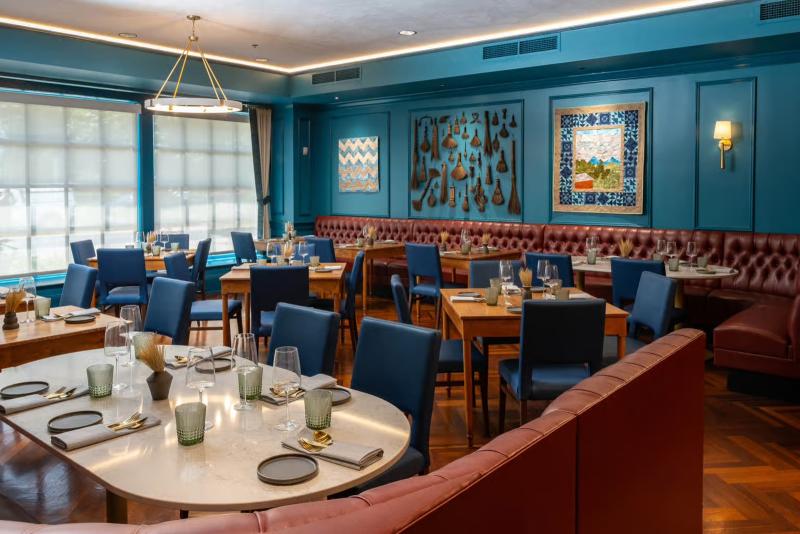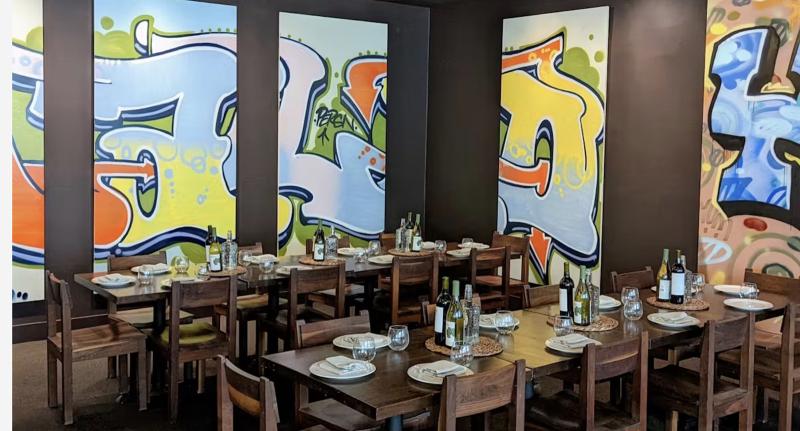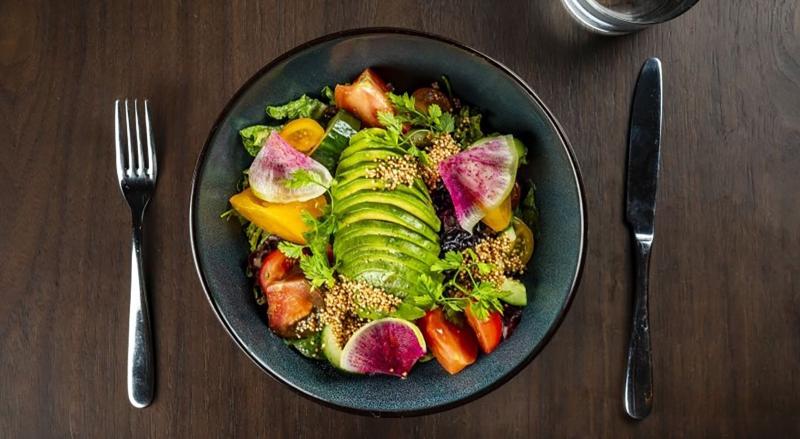Inflation, scarcity and the soaring costs of eggs, meat, and produce have been on everybody’s mind for a while. While the headlines and news broadcasts commonly put this discussion into the context of individual consumers and households, the scope and scale broaden dramatically when a hotel or resort’s management and food service decision makers are grappling with the rising costs of foodstuffs, raw materials, and supplies.
The times demand that people in executive food and beverage management roles reflect on how to adjust their property’s customer value proposition, come up with creative ways to do more with less—or different—raw materials, keep employees content, and smoothly change gears when supply chains are unexpectedly interrupted. It’s not just about thinking on one’s feet, but doing it thoughtfully with staff’s and guests’ best interests and expectations in mind.
“(Our strategies) are less about resetting the guest expectation, and more about meeting the guests’ expectations where they are,” said Karl McElligott, director of Food & Beverage at Olympia Hospitality in Portland, ME. He believes his biggest concern is predicting how the volatility of the market will affect guest experience. He used recent egg scarcity as the starting point for the conversation, which led to how hot button topics of tarrifs and climate change, along with other outside economic factors that may directly or indirectly affect guests.
Acting on these considerations will not only resolve issues in the short term, but prepare food and beverage teams to think proactively in the long term in the kitchen and beyond. Alexis Readinger, founder of Los Angeles-based hospitality design firm Preen, Inc. said steps beyond the food and ingredients include better restaurant interior design, improving relationships with outside purveyors, improving staff management, streamlining menus, and keeping a pulse on customer wants and desires.
“Economic uncertainty is wildly disruptive for all facets of our industry, and 2025 has been laden with it, from tariffs to rising labor costs to immigration crackdowns leaving legal residents hesitant to continue working in an industry in which immigrants make up 22 percent of the labor force,” she explained. “We’ve seen increasing costs and anticipate that they will continue to escalate. This is why F&B managers and designers should work together on the development side to help hoteliers control bottom-line costs and drive top-line revenue.”

“It always comes back to service and creating that warm hospitality environment the guest is looking for,” said Karl McElligott regarding providing a full sensory experience that will help offset rising prices in the eyes of guests. “We have found a sweet spot with highlighting more vegetable-based dishes and making those very interesting. Some of our most creative vegetable-forward dishes sell very well on many of our menus.
Walking on Eggshells
“Three months ago, you couldn’t buy a carton of eggs in a grocery store,” McElligott mused. “For us to manage that, we work with vendors and partners we have close relationships to deal with situations like this. Guest expectations have remained the same or have even gone up, and there is the climate dynamic to consider. Beef prices, for example, have gone up about 8 to 10 percent since 2019 because livestock herds have gotten smaller. As we manage high value proteins in the world of food and beverage, we have accomplished savings through rethinking our menus so some dishes will feature produce a little more prominently than proteins to meet the guests where they are while managing the overall cost dynamic.”
McElligott and his team also take an objective look at what’s selling when working on menu optimization. He leans on the “80/20 rule,” that most sales come from about 20 percent of the menu. It is a barometer that helps them determine which menu items should go and how much of what’s in the 80 percent should stay.
“For everything you build and put on a menu, you need to have the products for a given item in house. If you’re not selling it, you’re wasting ingredients and losing money,” he said, noting that many guests tend to eat healthier now, and protein tends to be less of a focal point in what they order. “We don’t think of this process as minimizing menus, but rethinking them so we will have exactly what we need to keep guests and customers happy.”
Olivier Gaupin, Loews Hotels & Co’s Executive Chef, also acknowledged that climate change has led to sourcing challenges. In addition to supply chain issues causing delays, product shortages, and increased logistics costs, weather events have stunted agricultural yields and created instability in product availability, especially for seasonal items used in specials and signature items guests enjoy and expect. This is where menu engineering plays a critical role in driving both guest satisfaction and business performance across Loews properties.
“We focus on crafting menus that are both guest-forward and operationally smart,” he detailed. “It’s about finding the right balance, maintaining culinary excellence, and being intentional with ingredients, pricing and execution. This requires us to be nimble, often pivoting to alternative ingredients, sometimes at a higher cost, to ensure continuity in our offerings. We’ve had to expedite shipments or find less familiar substitutes in some cases, all while maintaining consistency across properties. This means combining premium and cost-effective ingredients in a way that delivers value without sacrificing quality. By spotlighting three to five high-quality ingredients per dish, we maintain integrity, reduce complexity and ensure consistency across the brand.”
Gaupin and his kitchen teams regularly reassess protein sizing through a “more thoughtful lens,” calibrating portions to align with both cost targets and guest expectations to better manage margins while still delivering a fulfilling experience. This includes evaluating whether smaller cuts or more thoughtful plating can meet and exceed guest satisfaction.
“Do guests truly need an 8-ounce burger patty? A 48-ounce T-bone steak? A whole lobster? Not always,” he stated. “We’re always rethinking our menu engineering model, not just to improve operational efficiency, but to better align with evolving guest preferences and price sensitivity. By refining both sourcing and menu strategy, we’re ensuring that quality and value go hand-in-hand at every Loews property with a proactive, brand-wide approach to identifying cost efficiencies without compromising quality. Our teams regularly evaluate our entire product database, particularly our highest-spend categories, to uncover smarter sourcing opportunities and mitigate potential cost increases.”
One way Loews’s food and beverage management professionals have accomplished this on a micro and macro level is to reduce reliance on unnecessary imported food products, and instead work directly with trusted local and domestic manufacturers to craft key ingredients which allows its kitchens to streamline SKUs significantly. This ensures a consistent, high-quality product across the Loews portfolio.
On the other hand, keeping some tried-and-true strategies in the operations can help, according to Mike Bausch, a Tulsa-based restaurant owner and consultant who has shared his franchising and ownership expertise in TED Talks and other industry forums.
“To control costs, the old school approach of keeping a waste log is a very important thing to keep track of what we threw away, what we donated, what we cut, what orders were burnt and so on,” he said. “We then make adjustments in terms of cost structure, cost analysis, menu pricing and other small, simple things. This tightens up workflows, along with smart practices such as pre-portioning popular items before a rush.”
Although DyeLot Interiors Senior Associate Krystle Fader isn’t directly involved in operating F&B outlets, she and her team collaborate closely with client owners and operators, general managers, chefs and procurement teams to align design strategy and functional needs with operational realities as cost pressures mount.
From the design end of the equation, Fader sees increased demand for climate-resilient material sourcing and more local/regional procurement—both in terms of food and finish materials. “That means designing for modularity and adaptability, so operators can work with what’s available without losing brand consistency,” she said. “We are also seeing the building codes changing, especially in California, to a more stringent use of solar and adoption of all-electric kitchens.”
“Allow functional spaces to overlap so that minimal staff can cover two functions,” Readinger advised, shifting the conversation back to rethinking spaces for optimized staffing. “Make sure that all spaces function for all types of meal services without dark zones. If there’s a hybrid staffing model that flips from counter service at lunch to full service in the evening, it shouldn’t look ‘half-open’ until dinner service begins. (Updated) house equipment—like high-efficiency refrigeration and induction cooking lines—should respond to both environmental priorities and operational savings over time.”
When guests are faced with rising food prices, good design should appeal to what customers and employees value, such as social responsibility, energy conservation, waste management and other elements that give the dining experience a backstory—above and beyond creators and legendary L.A. chefs Susan Feniger and Mary Sue Milliken. SOCALO at the Gateway Hotel in Santa Monica, CA, a Preen, Inc. client, embodies many of these ideas.
Prioritizing Your Values, Your Staff’s and Your Customers’
Fader has seen a renewed interest in hybrid-use dining spaces among her clients that can adapt from à la carte breakfast service to private group dining or events. There is also a greater demand for kitchen and back-of-house spaces that are tech-integrated to support leaner staffing, smarter production and greater efficiency. Flexible storage and receiving zones, meanwhile, are designed to better accommodate evolving supply chains. Her clients also have a vested interest in better FF&E (furniture, fixtures and equipment) used in daily operations that reduce long-term maintenance and replacement costs.
“Maintaining high-touch guest experiences while navigating the ever-changing economic and supply landscapes is key,” Fader continued. “Operators are expected to deliver elevated, memorable dining experiences even as food costs, labor and energy consumption rise. Therefore, there is a need to create environments for clients that are both emotionally resonant and operationally smart—supporting staffing efficiency, storage, prep flow and flexibility in service models. We’re helping address both by optimizing layout efficiency to reduce staffing needs during off-peak hours, creating visual transparency and guest-facing prep elements that reduce back-of-house size without compromising experience.”
Readinger insisted generating more revenue to offset cost increases can be as easy as rethinking seating arrangement to create different kinds of spaces that appeal to diners in different moods and mindsets. Food waste can be stealthily reduced through thoughtful plateware sizing and modular serving strategies. On-property herb and produce gardens and edible landscaping, meanwhile, satisfy the growing popularity of hyper-locally sourced food. Waste-sorting infrastructure and compost collection areas are being built into new and existing kitchens and bars. Natural daylight and passive ventilation, meanwhile, result in a more natural and “authentic” ambiance that also reduces utility cost.
If a property’s outdoor space doesn’t allow for an on-property garden, Olympia Hospitality’s garbage-to-gardens programs prove to be a healthy alternative.
“A number of our properties are partnered with colleges, and in that space, sustainability is a very large component of the discussion,” McElligott said, noting some of them operate with geothermal energy through generators, also serving The Hotel at Oberlin in Ohio and The Glen House in New Hampshire, with more universities seeking similar collaborations. “In Swarthmore, PA, they’re building a geothermal plant to support the college, and as we have a hotel there, its restaurant will be able to jump on board with that. While we can achieve a higher level of sustainability, we can do this with fulfillment as well.”

Gaupin sees sustainability as a lever for cost control and operational excellence as well as a road to innovation. “We’re currently in the research -and-development phase of creating our own plant-based, all-natural, sustainable hamburger patty,” he said. “Designed to meet the growing demand for non-meat alternatives among guests, this product will offer a healthier option while allowing us to manage costs through a direct partnership with a trusted manufacturer. Our production volume enables us to keep pricing efficient while delivering a high-quality offering brand-wide.”
Supply and demanding customers: To further support Loews’ culinary teams, the company has launched a dedicated food and beverage platform over the past 18 months. This brand-wide resource provides clear direction on sourcing strategies, sustainability goals and vendor relationships. The guiding principle, “honest food, honest partnership,” reinforces the brand’s commitment to transparency, long-term thinking, and mindful procurement to achieve balance cost control and sustainability. This salad from the hotel group’s “Deeply Rooted” program touches on sustainability and locally sourced ingredients.
The Care and Feeding of Trusted Suppliers
“If you don’t have a seat at the table, you’re on the menu when it comes to vendor negotiations,” cautioned Bausch, whose restaurants run the gamut from neighborhood pizza places to upscale Italian dining.
While most Loews hotels have access to large vendor purchase program operated by Hilton, especially with big box supply purchases, they are complemented with cultivated relationships with local vendors, farmers and producers, including oyster and lobster farmers in the Northeast and produce farms in the Midwest. Thanks to the proximity of some hotels to colleges and universities, hotel chefs can go directly to the academic institutions’ farms to procure ingredients.
“We encourage our chefs and general managers to manifest those relationships to the point of where we’ll bring those farmers in to do training with the culinary teams,” he said, citing Historic Boone Tavern Hotel & Restaurant in Berea, KY where 50 percent of the menu is based on what is grown at the school’s farm. “Nobody can talk better about the produce that’s grown on a certain farm than the farmers themselves. We have hosted dinners with farmers in local areas a lot. This way, there’s a yin and a yang to that purchase program, where we’re supporting the college farm program, but also supporting the hotel restaurant in the same way.”
In a similar fashion, Loews Hotels has the advantage of a robust procurement office that collaborates with kitchen staff daily. “This team tracks market shifts, monitors pricing trends and helps our chefs and operators respond quickly to changes,” Gaupin detailed. “In today’s fluid food market, this level of oversight is crucial, allowing us to make informed decisions that protect both our quality and profitability.
He added that the purchasing strategy has been adjusted to include more secondary cuts of meat, enabling Loews chefs to showcase creativity while still safeguarding margins. It also helps culinary teams and buyers ensure vendors understand the importance Loews culinary teams place on sourcing products that meet the hotels’ and resorts’ culinary and financial expectations. Each property works with multiple suppliers and continually evaluates what and how it is purchased with a keen eye on quality, availability and cost.
“Strong supplier relationships are rooted in partnership, adaptability and commitment to ensuring every Loews kitchen is set up for success,” Gaupin continued. “It’s a thoughtful, brand-wide approach to sustainability, profitability and enhancing the guest experience. Ultimately, menu optimization at Loews is about more than just cost. It’s about making smart, inspired choices that benefit both the operation and the diner. We’ve also adopted a more agile and strategic approach to procurement, menu planning and vendor relationships, balancing operational efficiency with the elevated service and culinary standards our guests expect.”
“In the end, driving revenue starts with a winning concept, with a clear project narrative from food to menu to brand to design,” Readinger said about the role interior design plays in smarter spending. “In any market, the biggest expense is a project that doesn’t work. Making the numbers pencil out is more than just math, it's being able to calculate what guests value and then how to deliver that in a way that’s profitable.”
It is an ever-changing market, and you have to be ‘ever changing’ to meet that market and resolve problems as they arise,” McElligott said. “That’s a big part of how we approach things, because the food and beverage world is pretty fluid.”

Fun Facts
- According to international non-profit organization Hospitality Financial and Technology Professionals’ website (hftp.org), AI-powered tools are in the midst of revolutionizing hotel F&B operations and management involving guest personalization, operational efficiency, staffing and predictive analytics that help kitchen teams refine menus.
- Point-of-Sale systems like TOAST help Food and beverage managers through analytics and cost analysis of restaurant operations. Olympia Hospitality’s Karl McElligott notes that it helps his culinary teams manage the cost dynamic of each individual dish and make informed sustainability decisions. The kitchen display systems meant management could save money on paper goods.
- McElligott points out share plates and thoughtfully-designed smaller plates that are up to 70 percent of a dish’s original size can help offset menu item costs while providing guests the experience of the dish with the value proposition of a smaller format and less waste.
- Loews’ Gaupin credits strong, transparent relationships with suppliers to an emphasis on mutual respect, shared standards, and a commitment to delivering quality.
This article was originally published in the September edition of Hotel Management magazine. Subscribe here.

